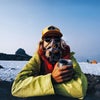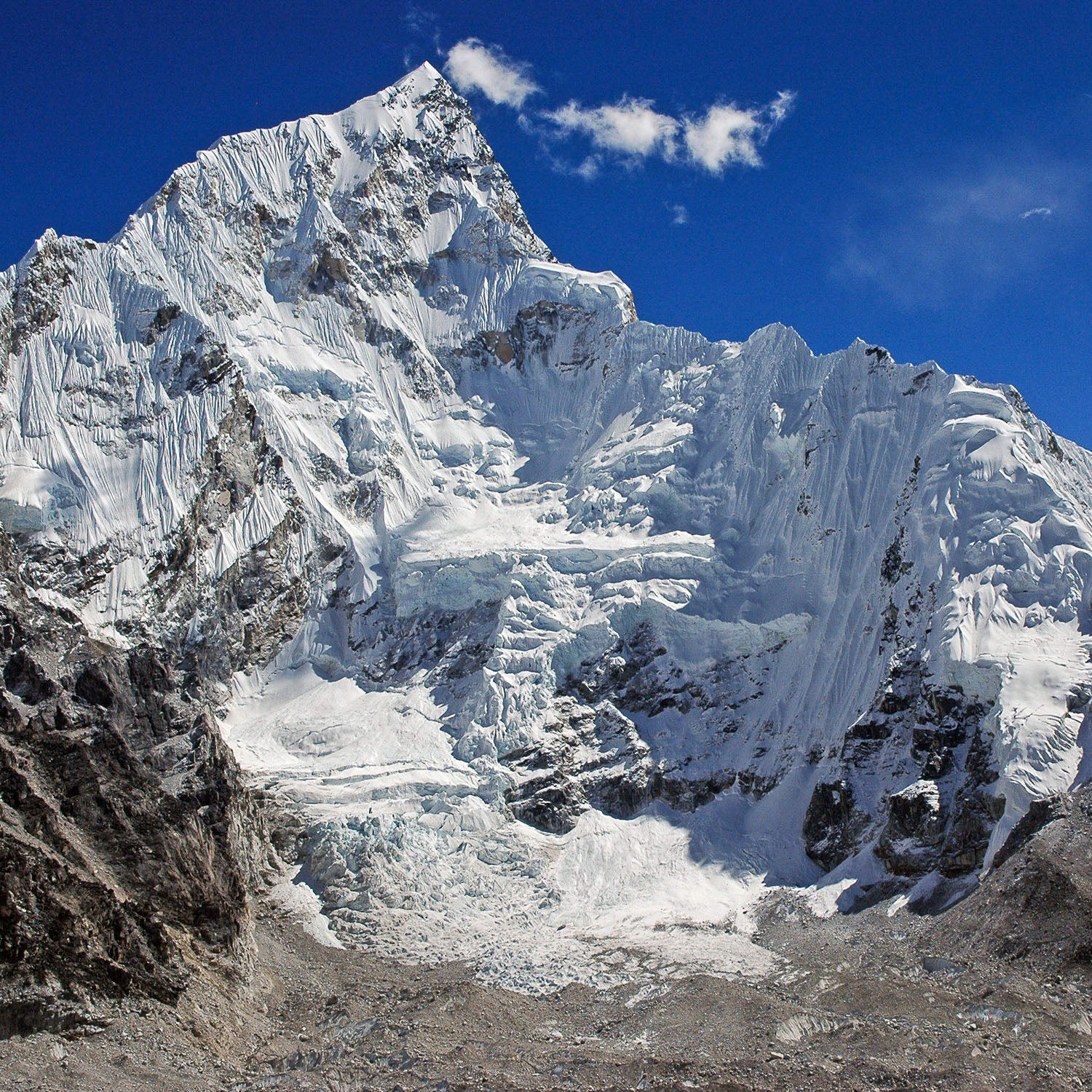On October 19, Frenchmen Hélias Millerioux, Frédéric Degoulet, and Niçois Benjamin Guigonnet—who call themselves “”—climbed a new route alpine-style on Nupte’s south face. Nuptse, a 25,791-foot giant in Nepal’s Khumbu Valley, lies near Lhotse and is a little over a mile to the southwest of Mount Everest. But unlike those other two peaks, Nuptse is rarely attempted, because it’s shorter than 8,000 meters. “It’s the second fiddle,” says mountaineer Alan Arnette. “It’s right next to Everest and Lhotse, so people don’t give it a whole lot of credit.”
Yet Nuptse is one of the most difficult mountains to climb. “It’s very dangerous,” says Arnette. “There’s a lot of loose snow, a lot of rockfall, and it’s very steep at times.” The mountain has seven summits, each posing its own challenge.
The Frenchmen pioneered a new route variation to the summit of Nuptse Nup II (25,400 feet) via the south face, a massive three-mile-wide wall with some 7,000 feet of vertical relief (that’s more than two El Caps stacked on top of each other). “It is a very, very huge wall that closes the valley,” says Millerioux. “When you see it the first time, it's like a magnet for alpinists.”
According to the Himalayan Database, the south face has been attempted only 14 times since 1961, and the mountain itself has seen just 60 expeditions—less than 10 percent of which have been successful. In 1975, four climbers from the UK and Nepal died during the second attempt. Most expeditions have turned around due to bad weather—the mountain is notorious for high winds, storms, and avalanches. A climb on the south face’s Cobweb Wall in 2010, led by American Cory Richards, was thwarted due to unexpectedly difficult terrain and snow conditions. “People that have climbed it often don’t make the true summit because they get stuck 30 to 100 meters below because the snow is too soft to navigate safely,” Arnette says.
Hélias Millerioux has led two failed expeditions to the south face, attempting the summit via the main Bonington Route in 2015, where he and Guigonnet teamed up with Colin Haley and Ueli Steck. (Steck fell to his death last spring while acclimatizing on Nuptse.) Millerioux and Guigonnet attempted the south face again in 2016.
This year, the French team took the same route as in 2016, but the last 1,000 feet or so was in uncharted territory. “The route wasn’t in good condition and there was a lot ice and rockfall,” says Millerioux. “At the beginning we said, OK the first two days are complicated, after that we’ll be at 6,800 meters and it will be better. But everyday was something harder.”
The men established a total of five camps over the course of six days, the highest at 24,419 feet, and had to climb both rock and ice to reach the peak. According to , they worked the final push at a rate of about 160 feet of gain per hour��(by comparison, guided climbs on Mount Rainier often move at 1,000 feet per hour), and summited in good weather. “We reached the peak at 3 p.m., with no wind,” Millerioux says. “After six days of climbing you are like an animal inside. But you see Everest and you are like on the cloud in your mind. We were crying and it was incredible.”
“The fact that they had tried before and didn’t make it speaks to the difficulty of the route and to the perseverance and skill of these alpinists,” says Arnette. “And I would call them alpinists, I wouldn’t call the climbers. They’ve earned that.”


